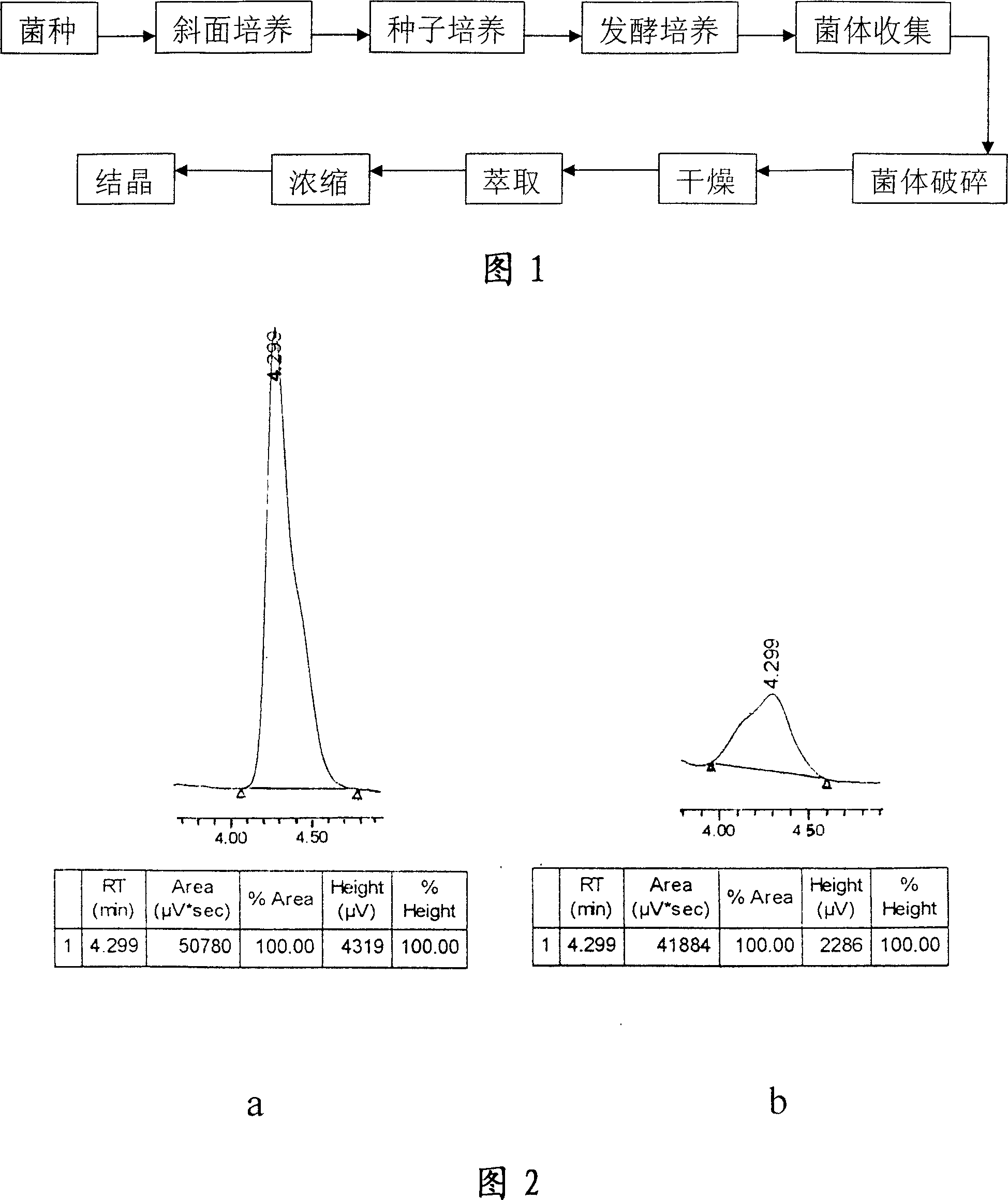Rhodotorula mucilaginosa for producing beta-caroten, beta-caroten and its production method
A technology of carotene and Torula rhodozyme, applied in the direction of microorganism-based methods, biochemical equipment and methods, fermentation, etc., can solve the problem of low β-carotene content, achieve short growth cycle, high yield, temperature and Effects over a wide pH range
- Summary
- Abstract
- Description
- Claims
- Application Information
AI Technical Summary
Problems solved by technology
Method used
Image
Examples
Embodiment 1
[0028] Example 1: Isolation and identification of Rhodotorula mucilaginosa CGMCC No.1536 producing β-carotene
[0029] 1. Sample collection
[0030] Soil samples were collected from abandoned gardens in Urumqi, Xinjiang, and separated on the surface of suitable yeast medium, such as YPD medium (glucose 20%, peptone 20%, yeast extract 10%), at 28°C after screening and optimization. The Rhodotorula mucilaginosa XJU-1 strain was obtained.
[0031] 2. Identification of strains
[0032] It was identified by molecular taxonomy based on the base sequence of the D1 / D2 region in the large subunit 26S rDNA and the base sequence analysis of the small subunit 5.8S rDNA and two internal transcribed spacers (ITS1 and ITS2). Combined with morphological observation and determination of physiological and biochemical characteristics, it was accurately identified as Rhodotorula mucilaginosa CGMCC No.1536.
Embodiment 2
[0033] Example 2: Cultivation of Rhodotorula mucilaginosa CGMCC No.1536 strain producing β-carotene and confirmation of fermentation process.
[0034] The selected medium is as follows:
[0035] ①Slant activation medium: glucose 2%; peptone 2%; yeast powder 1%; pH 9.0.
[0036] ② Liquid seed medium: 2% glucose; 2% peptone; 1% yeast powder; pH 8.5.
[0037] ③ Liquid fermentation medium: glucose 4%; peptone 2%; yeast powder 1%; pH 8.0.
[0038] The present invention adopts the conventional culture medium, but has special requirements on the pH. The conventional fermentation is carried out in an acidic environment, but the bacterial strain of the present invention produces high-yield beta-carotene in an alkaline condition.
[0039] Fermentation culture method (see accompanying drawing 1):
[0040] ① Slant Activation Culture: Transfer the strain from the preserved slant to the activation slant medium, and culture at 28°C for 48 hours.
[0041] ②Liquid seed culture: Received in...
Embodiment 3
[0044] Example 3: Fermentative production of β-carotene by Rhodotorula mucilaginosa CGMCC No.1536 strain.
[0045] Repeat the fermentation process steps in Example 2, and repeatedly verify the specific parameters in the fermentation process. The strain of the present invention preserved for a long time is inoculated on potato agar medium, at pH 7.0, temperature 25 DEG C, shaking speed is under the condition of 150r / min, carry out fermentation culture after 48.2h on solid slant culture, the fermented liquid is centrifuged (3000rPmin) After 10 minutes, the supernatant was discarded, the precipitate was washed with water, and then centrifuged again. The obtained yeast sludge was dried and weighed, and post-treatments such as concentration and crystallization were performed to obtain β-carotene with a yield of 368 μg / g.
PUM
 Login to View More
Login to View More Abstract
Description
Claims
Application Information
 Login to View More
Login to View More - R&D Engineer
- R&D Manager
- IP Professional
- Industry Leading Data Capabilities
- Powerful AI technology
- Patent DNA Extraction
Browse by: Latest US Patents, China's latest patents, Technical Efficacy Thesaurus, Application Domain, Technology Topic, Popular Technical Reports.
© 2024 PatSnap. All rights reserved.Legal|Privacy policy|Modern Slavery Act Transparency Statement|Sitemap|About US| Contact US: help@patsnap.com









